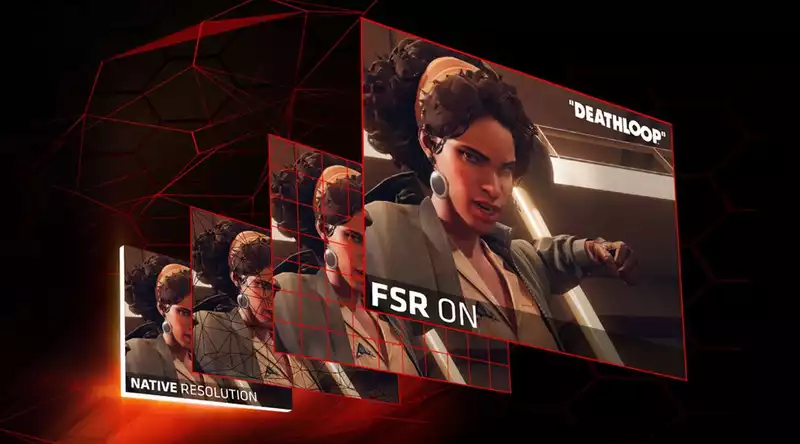For once we were right (opens in new tab), AMD has actually revealed the first details of its upcoming answer to Nvidia's DLSS 3 frame generation technology (opens in new tab). Known as frame interpolation, the technology will be included in AMD's FSR 3 upscaling platform; AMD has not stated a release date for FSR 3 or frame interpolation beyond the classic ambiguity of "late 2023."
Details were revealed in a presentation for the Game Developers Conference (GDC) (open in new tab); according to AMD, frame interpolation can increase frame rates by as much as 2x.
Similar to Nvidia's Frame Generation, the idea is to increase the overall frame rate by generating entirely new frames between fully 3D rendered frames, thus improving the perceived smoothness of the rendering.
AMD's slide deck for the event shows how frame interpolation fits into the rendering pipeline and dramatically improves the overall frame rate. However, it also shows that latency occurs. [AMD's answer to this problem is to combine frame interpolation with upscaling. Briefly, upscaling significantly reduces latency over native rendering, rather than the increased latency caused by frame interpolation. [In other words, combining upscaling with frame interpolation allows for both much better frame rates and much lower latency than native rendering, just as AMD does with frame generation in DLSS 3 by Nvidia. It is not clear if interpolation can be performed separately from upscaling.
However, the slide deck seems to imply that frame interpolation is intended to run alongside upscaling, not as a stand-alone technology. The slide deck clearly states, "FSR 3 is a combination of resolution upscaling and frame interpolation." [AMD explains that "gamers need both high frame rates and the lowest possible latency" and emphasizes that reducing latency is a focus area for FSR 3. AMD also states that its frame interpolation technology is designed without a feedback loop. This means that artifacts produced by frame interpolation should be much harder to find, like Nvidia's Frame Generation, since they do not persist beyond a single frame.
AMD's Frame Interpolation technology is a direct counterpart to Nvidia's Frame Generation, but is actually not entirely new; AMD has been offering a technology known as Fluid Motion for several years to interpolate motion video frames on some GPUs.
AMD has stated that it is leveraging its existing Fluid Motion technology and motion vectors to generate interpolated frames in FSR 3.
AMD claims that supporting frame interpolation with FSR 3 will make games that already support FSR 2 AMD claims that supporting FSR 3 and frame interpolation will make it "easier" for games that already support FSR 2. We believe that, like FSR 2, FSR 3 is essentially hardware agnostic, meaning that it will work on GPUs from other vendors, including Nvidia and Intel, as long as they are modern enough. [This is in contrast to Nvidia's DLSS 3 Frame Generation, which leverages the bespoke hardware of Nvidia's latest RTX 40 series GPUs (such as the RTX 4080 (open in new tab) and RTX 4070 Ti), so AMD and Intel graphics cards will not work with them.
This means that AMD's frame interpolation is true to the broader FSR playbook. It is a more widely compatible and more open alternative to Nvidia's highly proprietary DLSS technology.
A comparison of image quality between FSR 2 and DLSS 3 shows that, on balance, the latter has a slight edge.27]
Again, AMD has not stated a release date for FSR 3 and frame interpolation. However, what has been revealed suggests that it is quite close. In the meantime, you can peruse the entire GPUOpen slide deck (open in new tab), which explains in considerable detail how AMD's FSR technology has developed over time.


Comments